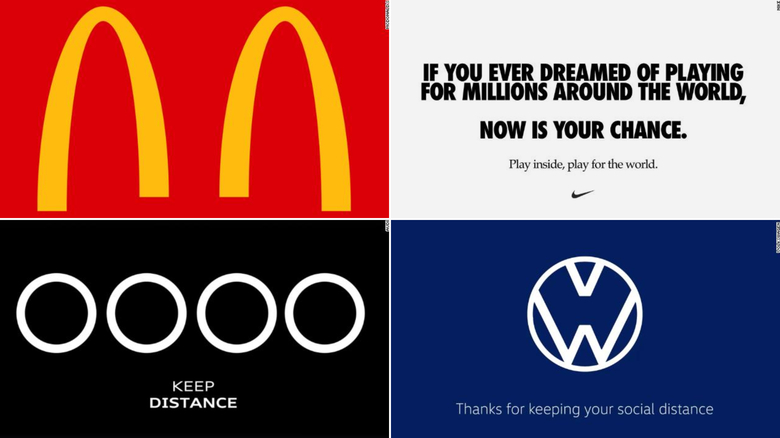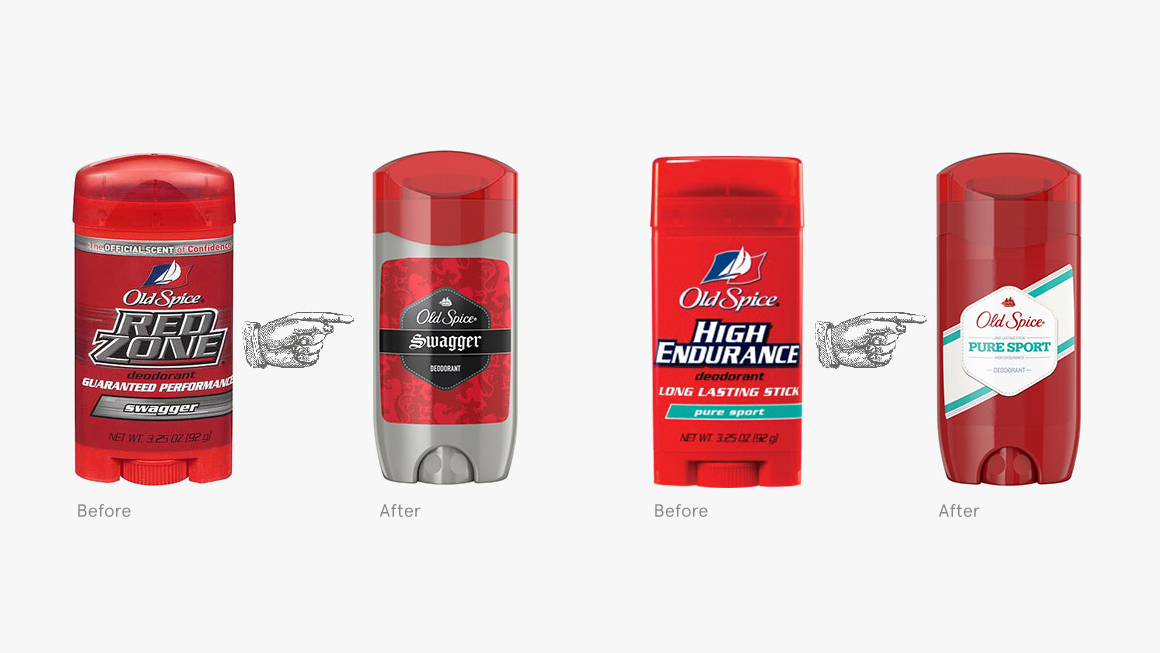How To Decide If You Should Rebrand Your Business
Have you been thinking about it? How to rebrand your business? With everything that has happened since the start of the year, it might be time for your brand to turn a new page. The way we all work, shop, and live has gone through some dramatic transformations. And likely, the way you operate your business too. So let’s take a look at what you should consider before you rebrand your business.

What does it mean to rebrand your business?
Rebranding is the process of establishing a new and different brand identity for your brand in the minds of consumers, investors, competitors and other stakeholders. Rebranding may include changing the brand name, concept, symbol, design and more.
When a business is going through a rebranding process, these are the aspects of the brand that tend to be altered:
- Brand name
- Brand image/personality/tone
- Company logo
- Products or services
- Marketing strategy
- Target audience
Should you rebrand your business?
There are few questions you need to answer before you start rebranding. These questions will help you determine if your company requires rebranding.
How has the growth of your company been under the current brand?
Is it too small? Flat or negative? Well, in these cases it can be very effective to make some major changes to your brand. Observe the growth of your company since the start. If you have rebranded your company before, see what kind of growth changes you experienced before, during and after those transitional periods. As an added measure, research your competitors who have gone through rebranding recently and observe their growth as well. The result of this research will help you figure out if a rebranding will help to boost your company growth.
On a different note if your company is growing fast, you might want to rethink your branding as well. The simplest reason is internationalization. 58% of small businesses already have an international customer base. If you have dreams and goals of your brand expanding beyond your particular city, or even going global, consider if your brand is easily understood in other markets as well. Depending on how diverse your local audience is, this is something you might want to consider even if you’re a local business. Tailoring your brand so that it is understood across your various audience segments is important.
Are you satisfied with your customer base?
A brand is created with its customers in mind. Piggybacking off our last point, if you are planning to expand your customer base, you will need to give your brand a refresh as well. Especially if the new customer base you are targeting has completely different demographics than the current customer base.
When you expand a business which initially targeted teenagers to target children from 5-12 yrs old, you might want to revamp the brand image to something that appeals to both of these groups. In some cases, your audience base can change even without your meaning for it too. Customers are dynamic. Their preferences and needs will evolve over time. This unprecedented year and pandemic have given us many examples of this. Rebranding might be effective for you to better connect with your existing customers and those you want to reach in these cases.
Is your brand associated with a negative image?
If your company’s reputation has been on the rocks, rebranding may help you to get past this rough patch. Any number of things can create a negative impression in your customers’ minds, and they can vary in severity. For instance, issues which can be addressed relatively easily like bad customer service or faulty merchandise may not require a rebrand. In these cases it may be effective to make the changes required in your operations, and then to launch a marketing campaign to ensure customers are aware of the improvements. By acknowledging where you’re at fault, and being transparent about how you’re implementing changes you can rebuild trust with customers.
In other, more drastic cases, like healthcode violations or blatantly discriminatory practices, you will need to consider whether your brand can bounce back as it is. In this era of social media, an isolated incident can escalate in no time. But this doesn’t mean your reaction has to be impulsive. Take the time to evaluate the pros and cons and move forward.
One example of a large brand that took on a rebrand is McDonald’s. After the documentary “Supersize Me” was released, their food, which was always seen as unhealthy, was rejected on a large scale. So, they rebranded themselves with more earthy colors and added salads to their menu to increase their offering of healthy food options.
Does your brand feel out of date?
Even if your sales are good, your customers are satisfied and your reputation is soaring, it might be time to rebrand your business if your branding is getting dated. Trends and technologies change all the time. If your branding isn’t timeless enough to adapt through all of this, you need to consider a rebrand so that your branding is more versatile.
And this doesn’t have to be a complete overhaul, it may be as simple as redesigning one element like your logo to better suit your present and future needs. Mastercard did exactly this. Knowing that the future of the bank transactions are shifting towards the mobile phones, they changed their logo to better suit the mobile market.
Even if your company does not face any of the above issues, there are still some reasons you might require a rebrand.
Mergers and acquisitions
If you are merging with another company and/or expanding your target market, rebranding, along with a new marketing campaign, would be a good choice as a way of introducing the merged company to the customers.
Change in company philosophy
The company may face a change of its mission, vision and values – especially under new management. If these factors of a brand are to change, the brand image has to change to reflect all of this. In 1997 Steve Jobs returned to Apple and changed the rainbow coloured apple logo into its modern metallic version, changing the perspective of the brand itself.
Partial rebranding vs. full rebranding
Partial rebranding is a process more focused on altering the visual identity of the brand. The more established a brand is, the harder it becomes to reinvent the whole brand in the eyes of customers. If you rebrand your whole business when your company is rooted strongly in the market, you might lose the trust of your customers. And along with that trust you will see a drop of performance of your brand. Partial rebranding allows you to change the brand image without losing the customer base you have built so far.
For example, Old Spice refreshed its branding and managed to carry forward the essence of its brand into a new market.
If the whole foundation of your business is shifting, to partially rebrand your business won’t be enough. This is where a full rebrand will be more effective.
Look before you leap and research before you rebrand
If there is one thing that will assure your rebranding will be a success, it’s research. Look into every aspect, every story, and every possibility. When doing your research, you should focus on the following:
Your target audience
Research into your customer base will help you determine which group you should target in your rebranding process. If you get into rebranding without doing research on your customers, you might find all the resources invested in the rebranding are wasted. There are times when the target group of a brand and the actual customers of that brand differ from each other. The customers in the market could belong to a completely different set of demographic than you intended. In these cases, the rebranding process not only fails to bring in new customers, it will also force the current customers out. So, get out there and see who is buying your products or services.
Your competitors
Competitors can be your worst threat and the best inspiration. Observe their rebranding processes and see where they got it right or where they went wrong. Learn from their mistakes. It will teach you how to apply your resources wisely when you rebrand your business.
Your slogan
A catchy slogan never fails to draw customers’ attention. If your slogan feels out of date or not engaging enough, it’s time to evolve. When creating a new slogan try using poetic and metaphorical language. You don’t have to go all Shakespeare on it. But language that brings up certain emotions is helpful.
Take Walmart for example. In 2007 they changed their slogan from ‘Always Low Prices’ to ‘Save Money, Live Better’. This slogan became a customer favorite to the point that Walmart was recognized as the world’s largest organization by revenue.
Your brand identity
If you are doing a full rebranding, you would have to rebuild your brand identity from the scratch. I’m talking about all the visual elements that make up your brand image and the brand personality that represents itself through your products and services. Start with your logo. When you recreate your logo, look into the newest trends that can make an impact. Make sure the trend you pick is not a spur of the moment decision. Your logo has to stand the test of time.
Keeping it simple would be a wise choice. Same goes for your colour palette. Choose colors that would appeal to your audience, and look great on the channels you will use to advertise. To incorporate all of your updates that make up your brand identity, from typography and imagery, to your logo, you’ll want to create a revised brand style guide.
Are you ready to rebrand your business?
Now that you’ve got a snapshot of everything to consider when you want to rebrand your business, we hope your next steps are more clear. Whether you decide to redesign your logo, spruce up your website, launch a new slogan, or just go for a complete overhaul of your brand, know that your brand story will keep evolving. And with each step, you’ll build a brand that’s strengthened by the lessons you learn along the way.





